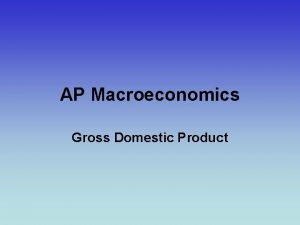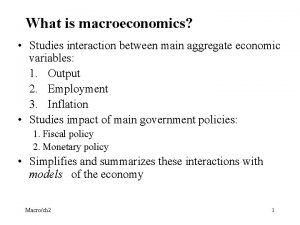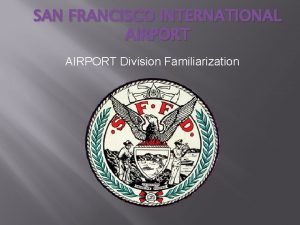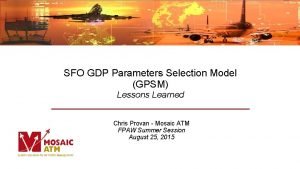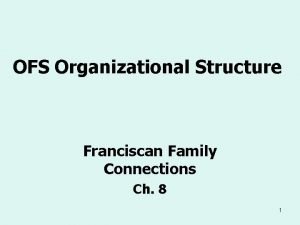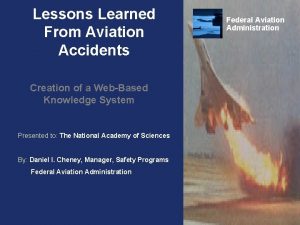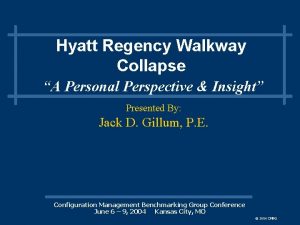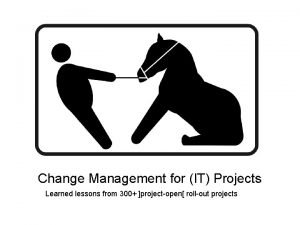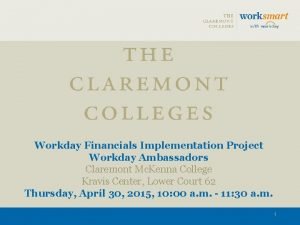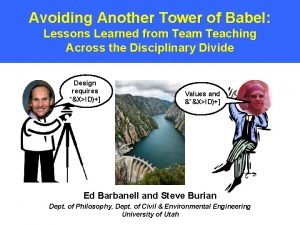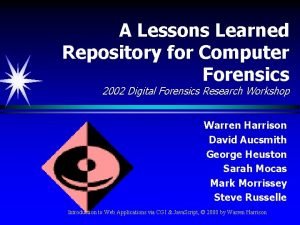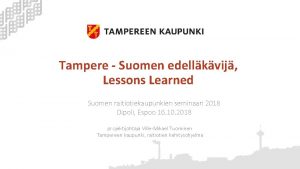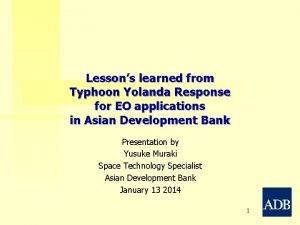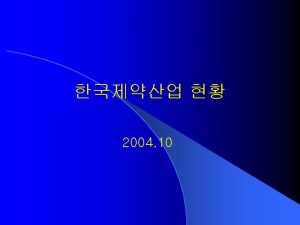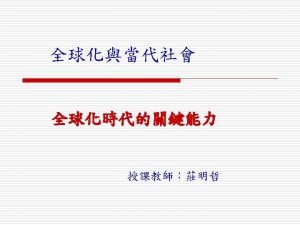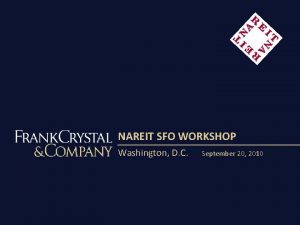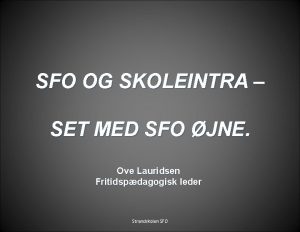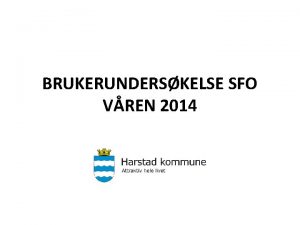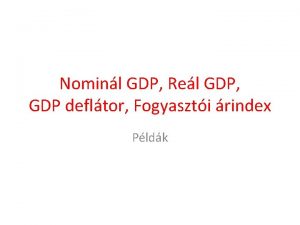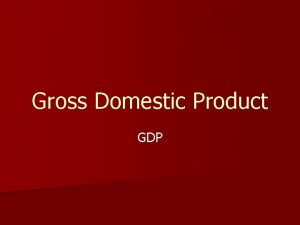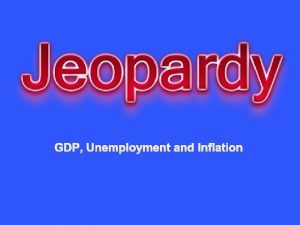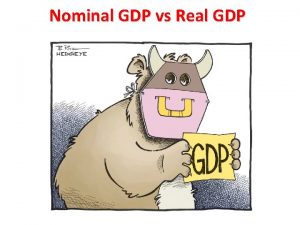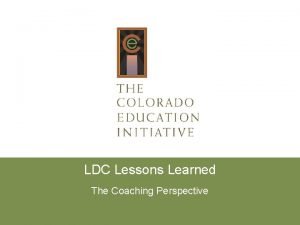SFO GDP Parameters Selection Model GPSM Lessons Learned














- Slides: 14

SFO GDP Parameters Selection Model (GPSM) Lessons Learned Chris Provan - Mosaic ATM FPAW Summer Session August 25, 2015

Stratus GDPs at SFO • Low ceilings at SFO reduce arrival rates from 60 flights/hour to 30 flights/hour • Marine stratus creates low ceilings on a near daily basis May-October – 40 -60 marine stratus GDPs – Average ground delay of 240 K minutes per year since 2008 2

SFO Stratus Forecast System • SSFS: dedicated marine stratus forecast product • Automated clearing time forecasts every 1 -2 hours • Meteorologist-in-the-loop oversight • Deployed in 2004 – Limited observed impact on GDP efficiency 3

GDP Parameter Selection Model • GPSM: decision support tool to recommend stratus GDP parameters • Balances: – Ground delay issued – Risk of airborne holding and diversion • Leverages SSFS forecasts and 15+ years of historical errors • UI integrated into SSFS dashboard 4

GDP Parameter Selection Model Legacy Dashboard 5 GPSM UI

GDP Parameter Selection Model • JPDO Weather-ATM integration plan identified 5 levels of integration: – Level 0 - Stand-Alone Displays: Weather data displayed on dedicated interfaces separate from ATM data. – Level 1 - On-the-Glass Weather Integration: Weather overlays added to ATM tools. – Level 2 - Translated Weather Integration: Weather data translated into ATM constraints. – Level 3 - Impact Integration: Weather and ATM data integrated to determine ATM impacts. – Level 4 - Machine-to-Machine (M 2 M) Integration: Automated recommendations for ATM decisions without the need of human interpretation or translation. • GPSM: first operational evaluation of a Level 4 ATM-Wx integration tool 6

Historical Analysis and Shadow Evaluation • Historical data from 20062011 used to tune model and estimate potential benefits – 15 -20% decrease in total delay – 35 -45% decrease “reducible” delay • Shadow evaluation in 2012 – Expose users to tool – Develop procedures 7

2012: Field Evaluation • Operational evaluation May. October 2012 • Web-based SSFS/GPSM interface for collaboration • Challenging weather season limited opportunities for use 8

2012: Field Evaluation • Results validated projections • 1, 600 -minute (20%) reduction in assigned ground delay per GDP when GPSM followed • Potential to reduce delay after revision by up to 1, 500 additional minutes • Estimated airborne holding lower under GPSM GDPs 9

Current Status • GPSM awaiting consideration for CATM work package • GDP delays up significantly in 2013 – …with caveats • Focus has turned to procedural changes to increase arrival rates • What can the aviation community learn from the GPSM experience? 10

Lessons Learned • Lesson #1: Level 3 to Level 4 integration is a big jump – – Requires much more trust in tool Burn risk goes way up Perception: “Helping me do my job” vs. “Doing my job for me” Shifts roles from tactical to strategic 11

Lessons Learned • Lesson #2: End user buy-in and collaboration are critical – Involve all stakeholders as early as possible • E. g. , design and concept of operations – Leverage existing relationships to develop trust • E. g. , CWSU to TMU – Agree on clear, simple (as much as possible) metrics and success criteria up front – Align objectives, incentives, and procedures 12

Lessons Learned • Lesson #3: Still difficult technological challenges – – Complexity/nuance of robust forecasts Strategic TFM has unique requirements Where do meteorologists enter the loop? Caveats can overwhelm the message 13

Questions (and Answers) Chris Provan cprovan@mosaicatm. com Lara Shisler lshisler@mosaicatm. com
 Real gdp and nominal gdp
Real gdp and nominal gdp Real gdp formula
Real gdp formula Sfo airport authority
Sfo airport authority Sfo stengt sommer 2021
Sfo stengt sommer 2021 Sfo atm
Sfo atm Nafra sfo
Nafra sfo Lessons learned faa
Lessons learned faa Who was responsible for the hyatt regency walkway collapse
Who was responsible for the hyatt regency walkway collapse Change management lessons learned
Change management lessons learned Claremont workday
Claremont workday Elijah contest at mount carmel
Elijah contest at mount carmel Lessons learned from the tower of babel
Lessons learned from the tower of babel Lessons learned repository
Lessons learned repository Lessons learned suomeksi
Lessons learned suomeksi Typhoon yolanda lessons learned
Typhoon yolanda lessons learned
